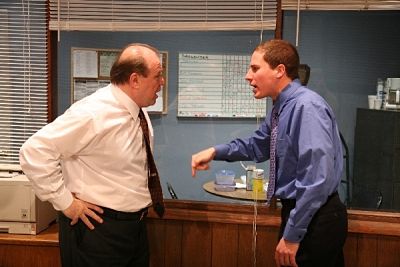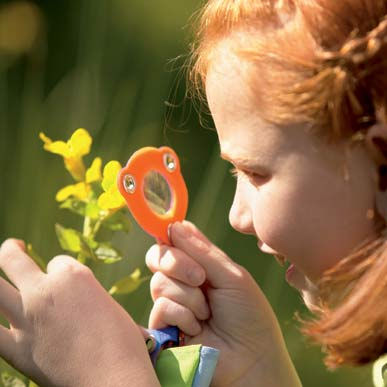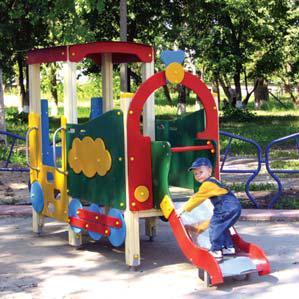Saturday, July 31, 2010
Friday, July 30, 2010
Parent-Teacher Relationships: Part I
 The relationship between teachers and parents is an extremely powerful component in student success. Yet, so many parents go through the school year without communicating with the teacher or understanding what to do (or avoid) to make the most of the year. So, Lisa Capretto interviewed a third-grade teacher, Stacey Nelson, a devoted and successful educator in Tennessee. Stacey shared several things teachers wish parents knew before sending their children to school.
The relationship between teachers and parents is an extremely powerful component in student success. Yet, so many parents go through the school year without communicating with the teacher or understanding what to do (or avoid) to make the most of the year. So, Lisa Capretto interviewed a third-grade teacher, Stacey Nelson, a devoted and successful educator in Tennessee. Stacey shared several things teachers wish parents knew before sending their children to school.Posted by Unknown at 12:00 PM 0 comments
Labels: How to Get the Best Education Possible for Your Child, Tips for parents
Thursday, July 29, 2010
PTA Involvement Ideas
 The National PTA states that whether you spend three hours or three months volunteering in a way that works for you, remember that you're not just helping your child for the year, but you're setting your child up for success throughout their entire academic career. Below are additional ideas for parental involvement in schools.
The National PTA states that whether you spend three hours or three months volunteering in a way that works for you, remember that you're not just helping your child for the year, but you're setting your child up for success throughout their entire academic career. Below are additional ideas for parental involvement in schools.Posted by Unknown at 12:00 PM 0 comments
Labels: How to Get the Best Education Possible for Your Child, Tips for parents
Wednesday, July 28, 2010
PTA's National Standards for Family-School Partnerships
 The PTA's National Standards for Family-School Partnerships is very simple. There is a six step program that you can follow to stay on track with parent involvement at your school and PTA.
The PTA's National Standards for Family-School Partnerships is very simple. There is a six step program that you can follow to stay on track with parent involvement at your school and PTA.2. Communicate effectively. Design and print "Happy Grams" as an easy way for teachers to regularly report positive behavior and/or achievements to parents. Consider using color-coded lines or footprints on hallway walls or floors, to help direct parents to the office, library, or parent resource center. Include two-way communication mechanism, such as a question-and -answer section or mini survey, in each edition of your newsletter. Distribute calendars so parents can record upcoming events, assignments, and dates to check with teachers on their child's progress.
3. Support student success. Create a checklist and tip sheets for effective parent-teacher conferences. Invite teachers and professionals from the community to speak at meetings. Provide parents involvement tips and suggestions.
4. Speak up for every child. Match new families with a buddy family that knows the ropes. Plan workshops on how to ask the right questions about children's progress and placement. Involve parents in ongoing training on topics such as effective advocates, identifying and supporting learning styles, and fostering student achievement.
5. Share power. Working in partnership with principals and identifying ways the PTA/parent group can support one or more goals of the school improvement plan. Host a forum for candidates running for public office and focus on issues that affect children, families, and education. Get to know elected officials at all levels of government.
Posted by Unknown at 12:00 PM 0 comments
Labels: How to Get the Best Education Possible for Your Child, Tips for parents
Tuesday, July 27, 2010
Parent Involvement: Part II
 Parent involvement in their children's education is extremely important. According to Danielle Wood, editor-in-chief of Education.com, the best opportunities for classroom involvement occur when kids are younger. But younger years should not the end of involvement in the classroom. "Teachers are eager to have extra eyes, ears, and hands in the classroom to keep things running smoothly," Wood says. She shares some simple ideas for how parents can get involved at both early and later stages of their children's academic careers.
Parent involvement in their children's education is extremely important. According to Danielle Wood, editor-in-chief of Education.com, the best opportunities for classroom involvement occur when kids are younger. But younger years should not the end of involvement in the classroom. "Teachers are eager to have extra eyes, ears, and hands in the classroom to keep things running smoothly," Wood says. She shares some simple ideas for how parents can get involved at both early and later stages of their children's academic careers.Posted by Unknown at 12:00 PM 0 comments
Labels: How to Get the Best Education Possible for Your Child, Tips for parents
Monday, July 26, 2010
Parent Involvement: Part I
Posted by Unknown at 12:00 PM 0 comments
Labels: How to Get the Best Education Possible for Your Child, Tips for parents
Sunday, July 25, 2010
Adding Walnuts To Men's Diet
 A daily handful of tasty, crunchy, walnuts may help fight prostrate cancer, says Paul Davis, Ph.D., a nutrition researcher at the University of California. In his new study, Davis fed walnuts or soybeans oil to mice programmed to develop prostrate cancer. The walnut mice developed cancer tumors that were 50 percent smaller and grew 30 percent slower than the soybean oil mice.
A daily handful of tasty, crunchy, walnuts may help fight prostrate cancer, says Paul Davis, Ph.D., a nutrition researcher at the University of California. In his new study, Davis fed walnuts or soybeans oil to mice programmed to develop prostrate cancer. The walnut mice developed cancer tumors that were 50 percent smaller and grew 30 percent slower than the soybean oil mice.Posted by Unknown at 12:00 PM 0 comments
Labels: Health and the family
Saturday, July 24, 2010
Walk Your Way To Fitness
 Walking is the ultimate bargain exercise, proving you don't need fancy equipment or pricey gyms to get fit. You do need to mix it up. According to Karen Asp, in an article in the July 2010 of Better Homes and Garden, here are three different walks to keep your heart healthy, your waistline trim, and your stress level down.
Walking is the ultimate bargain exercise, proving you don't need fancy equipment or pricey gyms to get fit. You do need to mix it up. According to Karen Asp, in an article in the July 2010 of Better Homes and Garden, here are three different walks to keep your heart healthy, your waistline trim, and your stress level down.Posted by Unknown at 12:00 PM 0 comments
Labels: Health and the family
Friday, July 23, 2010
Students and Summer Jobs
 There is a lot to be said for students who get a summer job. I know it isn't easy to find a job these days, but it's not impossible. According to an article in the July 2010 issue of Better Homes and Gardens, a University of Iowa study, students with paid jobs during the summer break had increased self esteem and greater motivation. Just ask Steve Jobs. His summer at an apple orchard led him to call his company Apple. Still need convincing? President Obama filled cones at Baskin-Robbins.
There is a lot to be said for students who get a summer job. I know it isn't easy to find a job these days, but it's not impossible. According to an article in the July 2010 issue of Better Homes and Gardens, a University of Iowa study, students with paid jobs during the summer break had increased self esteem and greater motivation. Just ask Steve Jobs. His summer at an apple orchard led him to call his company Apple. Still need convincing? President Obama filled cones at Baskin-Robbins.Posted by Unknown at 12:00 PM 0 comments
Labels: How to Get the Best Education Possible for Your Child, Tips for parents
Thursday, July 22, 2010
Things You Do Not Want to Do!
 Yesterday's blog was about the things you can do to help make your children have a better transition into the school year. According to Marcy Wilard, there are definitely things you do not want to do as far as your child's education is concerned.
Yesterday's blog was about the things you can do to help make your children have a better transition into the school year. According to Marcy Wilard, there are definitely things you do not want to do as far as your child's education is concerned. Posted by Unknown at 12:00 PM 0 comments
Wednesday, July 21, 2010
Things You Can Do For a Successful School Year
 There are things you can do to help your child have a successful school year and even enjoy being back in the classroom. According to Marcy Wilard of the Child Family and School Psychology program, it is important that you help your children transition from summer to school. Below are things you should do before school begins:
There are things you can do to help your child have a successful school year and even enjoy being back in the classroom. According to Marcy Wilard of the Child Family and School Psychology program, it is important that you help your children transition from summer to school. Below are things you should do before school begins:Posted by Unknown at 12:00 PM 0 comments
Labels: How to Get the Best Education Possible for Your Child, Tips for parents
Tuesday, July 20, 2010
6 Key People to Meet At Your Child's School: Part II
 Yesterday, we discussed 3 of the 6 people you should meet and introduce yourself to according to an article by Lisa Capretto. The 3 people were the principal, the school nurse, and the room parent. Today we will look at 3 more suggestions from Capretto.
Yesterday, we discussed 3 of the 6 people you should meet and introduce yourself to according to an article by Lisa Capretto. The 3 people were the principal, the school nurse, and the room parent. Today we will look at 3 more suggestions from Capretto.Posted by Unknown at 12:00 PM 0 comments
Labels: How to Get the Best Education Possible for Your Child, Tips for parents
Monday, July 19, 2010
6 Key People to Meet At Your Child's School: Part I
Posted by Unknown at 12:00 PM 0 comments
Labels: How to Get the Best Education Possible for Your Child, Tips for parents
Sunday, July 18, 2010
Tweens Need More Sleep
 Experts say tweens and teens need at least 8 to 9 hours of sleep a night, if not more. But only 20% of the 12 to 18 year old surveyed for a study published in Pediatrics reported sleeping 8 hours or more hours on school nights. What's keeping them up? Caffeinated energy drinks and too many electronic gadgets. Think phones, TVs, MP3 players, and computers, often all in the same room. What can you do? Christina Calamaro, Ph.D., the lead author of the study offers these tips:
Experts say tweens and teens need at least 8 to 9 hours of sleep a night, if not more. But only 20% of the 12 to 18 year old surveyed for a study published in Pediatrics reported sleeping 8 hours or more hours on school nights. What's keeping them up? Caffeinated energy drinks and too many electronic gadgets. Think phones, TVs, MP3 players, and computers, often all in the same room. What can you do? Christina Calamaro, Ph.D., the lead author of the study offers these tips:
Posted by Unknown at 12:00 PM 0 comments
Labels: Health and the family, Tips for parents
Saturday, July 17, 2010
Better Toothbrushes For Kids
 According to an article in the December 2009 issue of Parents magazine, there are toothbrushes to help your child get the hang of brushing their teeth. The article cautions that your child will need supervision to brush properly until about 7 years old. Below are the suggested toothbrushes and prices:
According to an article in the December 2009 issue of Parents magazine, there are toothbrushes to help your child get the hang of brushing their teeth. The article cautions that your child will need supervision to brush properly until about 7 years old. Below are the suggested toothbrushes and prices:Extra Power:
Every time your child brushes with the Sonicare for Kids, the power lasts a little longer until it hits 2 minutes. 4 years + $70, amazon.com
Super Scrubber:
When Dr. Fresh's Spider-Man Light-Up Toothbrush stops flashing after 60 seconds, move on to the next row of teeth. 3 years + $3, target.com
Double Duty:
The extra-long term of MAM's Training Brush lets you both grasp the handle. 6 months + $4, thesoftlanding.com
A another very important tip for parents is to teach your child to floss their teeth. It is as important as brushing the teeth.
Posted by Unknown at 12:00 PM 0 comments
Labels: Health and the family, Tips for parents
Friday, July 16, 2010
Preventing "Brain Drain" This Summer: Part II
 Yesterday I promised to give you more ideas on preventing "Brain Drain" this summer for your kids. You must keep your kids active physically and mentally during the summer break. Yesterday on, ABC Good Morning America, they stressed how research shows that students lose two months of math skills over the summer and will lose two to three months of reading fluency if there is no enrichment. Below are some more suggestions on how to prevent "Brain Drain" in Science.
Yesterday I promised to give you more ideas on preventing "Brain Drain" this summer for your kids. You must keep your kids active physically and mentally during the summer break. Yesterday on, ABC Good Morning America, they stressed how research shows that students lose two months of math skills over the summer and will lose two to three months of reading fluency if there is no enrichment. Below are some more suggestions on how to prevent "Brain Drain" in Science.Posted by Unknown at 12:00 PM 0 comments
Labels: How to Get the Best Education Possible for Your Child, Tips for parents
Thursday, July 15, 2010
Preventing "Brain Drain" This Summer: Part I
 A lot of kids have activities planned this summer like swimming and basketball. According to Ann Pleshette Murphy and Laura Zaccaro, studies show that students lose two months of math skills over the summer, and if kids are reluctant readers, getting them back into the swing of school can be painful for both of you.
A lot of kids have activities planned this summer like swimming and basketball. According to Ann Pleshette Murphy and Laura Zaccaro, studies show that students lose two months of math skills over the summer, and if kids are reluctant readers, getting them back into the swing of school can be painful for both of you.Posted by Unknown at 12:00 PM 0 comments
Labels: How to Get the Best Education Possible for Your Child, Tips for parents
Wednesday, July 14, 2010
Playing By the Rules
 Playing at the neighborhood playground is a proven way for children to blow off steam. It helps your child re energize so they can focus and be calmer later on in the day. According to Lynne Ticknor, M.A., a parenting consultant, these eight basic playground rules below, can teach your child the safety element while having fun.
Playing at the neighborhood playground is a proven way for children to blow off steam. It helps your child re energize so they can focus and be calmer later on in the day. According to Lynne Ticknor, M.A., a parenting consultant, these eight basic playground rules below, can teach your child the safety element while having fun.Posted by Unknown at 12:00 PM 0 comments
Labels: Health and the family, Tips for parents
Tuesday, July 13, 2010
Reading This Summer: 4Th - 6Th Grade
 Reading with your child or having your child read everyday will improve their reading as well as build vocabulary. Writing skills will also improve and all academic areas will be strengthened. The following titles are books that I have found that students enjoy or are award winning titles. Make sure you check your child's school summer reading requirements and have your child reading 15-60 minutes every day during the summer.
Reading with your child or having your child read everyday will improve their reading as well as build vocabulary. Writing skills will also improve and all academic areas will be strengthened. The following titles are books that I have found that students enjoy or are award winning titles. Make sure you check your child's school summer reading requirements and have your child reading 15-60 minutes every day during the summer.Fourth Grade
Fifth Grade
Sixth Grade
To read more about "Getting the Best Education Possible" for your child and suggested readings , order my book "A Parent's Handbook: How to Get the Best Education Possible for Your Child Grades K-6Th at http://www.besteducationpossible.com/ or http://www.amazon.com/ or http://www.barnsandnoble.com/
Posted by Unknown at 12:00 PM 0 comments
Labels: How to Get the Best Education Possible for Your Child, Tips for parents
Monday, July 12, 2010
Reading This Summer: Pre-K - 3rd Grade
 Most school districts have suggested reading list for students during the summer. Check on your child's school web site and make sure he/she is reading any required reading while on summer break. The following titles are books that I have found students enjoy hearing or are award winning titles. Great literature abounds for children. Ask friends and relatives to buy your child books instead of toys or video games. Research shows that reading to your child early on will improve a child's academic performance throughout life. Below are my favorite children's literature for Pre-K -Third Grade.
Most school districts have suggested reading list for students during the summer. Check on your child's school web site and make sure he/she is reading any required reading while on summer break. The following titles are books that I have found students enjoy hearing or are award winning titles. Great literature abounds for children. Ask friends and relatives to buy your child books instead of toys or video games. Research shows that reading to your child early on will improve a child's academic performance throughout life. Below are my favorite children's literature for Pre-K -Third Grade.Posted by Unknown at 12:00 PM 0 comments
Labels: How to Get the Best Education Possible for Your Child, Tips for parents
Sunday, July 11, 2010
Meat Free Meals
 Vegetarian or not, your kids should be eating lots of fruits and vegetables. A well-planned vegetarian diet is healthy even for babies and children, according to a statement from the American Dietetic Association. Kids who avoid all meat usually take in less saturated fat and eat more produce an d fiber that their carnivorous peers. They tend to be leaner and have lower cholesterol too. Make sure your little vegetarians are getting these nutrients that can go missing from meatless diets. (Save nuts and seeds until age 4). Below are some suggestions from the December 2009 issue of Parents magazine.
Vegetarian or not, your kids should be eating lots of fruits and vegetables. A well-planned vegetarian diet is healthy even for babies and children, according to a statement from the American Dietetic Association. Kids who avoid all meat usually take in less saturated fat and eat more produce an d fiber that their carnivorous peers. They tend to be leaner and have lower cholesterol too. Make sure your little vegetarians are getting these nutrients that can go missing from meatless diets. (Save nuts and seeds until age 4). Below are some suggestions from the December 2009 issue of Parents magazine.Posted by Unknown at 12:00 PM 0 comments
Labels: Health and the family, Tips for parents
Saturday, July 10, 2010
Walk This Way
 According to an article in the December issue of Parents magazine, each year 51,000 child pedestrians are injured. Kids are especially vulnerable because they move quickly and impulsively and they aren't good at judging an oncoming car's speed or distance, interpreting road signs, or spotting vehicles in their peripheral vision, says a new report from American Academy of Pediatrics. One study found that a third of parents allow their kindergartners to cross the street alone. Below are traffic-safety tips to keep in mind:
According to an article in the December issue of Parents magazine, each year 51,000 child pedestrians are injured. Kids are especially vulnerable because they move quickly and impulsively and they aren't good at judging an oncoming car's speed or distance, interpreting road signs, or spotting vehicles in their peripheral vision, says a new report from American Academy of Pediatrics. One study found that a third of parents allow their kindergartners to cross the street alone. Below are traffic-safety tips to keep in mind:Posted by Unknown at 12:00 PM 0 comments
Labels: Health and the family, Tips for parents
Friday, July 9, 2010
Learning With Magnifiers
 According to Ellen Booth Church, a former professor of early childhood, you should have your children take a closer look at life with a magnifying glass! Tiny things are a wild source of fascination of children. Small stuff adults take for granted, like a line of marching ants on a sidewalk or a minute peck of mica shining in a rock, they see as invitation to stop and examine. A magnifier is available at most toy stores, is the perfect tool for helping young explorers further their intimate investigations in an up-close and personal way. The activities below will guide your children in their search through the world of the small.
According to Ellen Booth Church, a former professor of early childhood, you should have your children take a closer look at life with a magnifying glass! Tiny things are a wild source of fascination of children. Small stuff adults take for granted, like a line of marching ants on a sidewalk or a minute peck of mica shining in a rock, they see as invitation to stop and examine. A magnifier is available at most toy stores, is the perfect tool for helping young explorers further their intimate investigations in an up-close and personal way. The activities below will guide your children in their search through the world of the small.Posted by Unknown at 12:00 PM 0 comments
Labels: How to Get the Best Education Possible for Your Child, Tips for parents
Thursday, July 8, 2010
Comic Strips! They Help Kids Learn to Read and Write!
 According to Bill Zimmerman, a prize-winning newspaper editior, comic strips, like their cousins graphic novels and comic books, are more accepted today by educators as tools for helping children master literacy. The funny silly, clever, and touching story lines in each short strip draw eager readers in. Just a few words per frame is all it takes for a comic strip's characters to reveal a complete story. They don't require long sentences or paragraphs to relate a captivating tale or a powerful message.
According to Bill Zimmerman, a prize-winning newspaper editior, comic strips, like their cousins graphic novels and comic books, are more accepted today by educators as tools for helping children master literacy. The funny silly, clever, and touching story lines in each short strip draw eager readers in. Just a few words per frame is all it takes for a comic strip's characters to reveal a complete story. They don't require long sentences or paragraphs to relate a captivating tale or a powerful message.
Posted by Unknown at 12:00 PM 0 comments
Labels: How to Get the Best Education Possible for Your Child, Tips for parents
Wednesday, July 7, 2010
Teasing Vs. Bulllying
 Kids poke fun at one another. It's just what they do. Our instinct as parents may be to immediately stop the behavior and try to protect our kids from it, but, some teasing is critical to our children's social development, according to an article in Scholastic Parent & Child, October issue.
Kids poke fun at one another. It's just what they do. Our instinct as parents may be to immediately stop the behavior and try to protect our kids from it, but, some teasing is critical to our children's social development, according to an article in Scholastic Parent & Child, October issue.Teasing Vs. Bullying
Definition: Teasing Vs. Bullying
If your child tells you his/her classmates called him/her ugly, don't just jump in to assure them they are beautiful, says Mills. "As soon as you do that, you've let them become victimized." Instead, listen to what they say, and then help them come up with a plan to address it the next time it happens. If you want more information, don't ask your child directly if he's being teased. Instead a question that can be answered in the second or third person. How do kids joke around these days? Or, what is teasing kike for kids today?
Posted by Unknown at 12:00 PM 0 comments
Labels: Health and the family, Tips for parents
Tuesday, July 6, 2010
Ages and Stages of Tweens: Part II
 According to Scholastic Parent and Child magazine, October 2009 issue, you should gradually give your tween more freedom. Let him/her have some clearly defined personal space or redecorate their bedroom if they have outgrown the Star Wars or Barbie design. If they want to do homework after TV, and complete it well, allow it. If you refuse too much too often in order to stay in control, you could face far more difficulty, assertive challenges as retaliation. Most importantly, show your tween respect. When you support their point of view, they feel worthwhile and treated like an equal. Below are some tips for parents of tweens.
According to Scholastic Parent and Child magazine, October 2009 issue, you should gradually give your tween more freedom. Let him/her have some clearly defined personal space or redecorate their bedroom if they have outgrown the Star Wars or Barbie design. If they want to do homework after TV, and complete it well, allow it. If you refuse too much too often in order to stay in control, you could face far more difficulty, assertive challenges as retaliation. Most importantly, show your tween respect. When you support their point of view, they feel worthwhile and treated like an equal. Below are some tips for parents of tweens.Posted by Unknown at 12:00 PM 0 comments
Labels: How to Get the Best Education Possible for Your Child, Tips for parents
Monday, July 5, 2010
Ages and Stages of Tweens: Part I
 as carefree as it may seem, it's not easy being a tween. At this age, children need more than your unconditional love and appreciation; they need hands-on experience to discover who they are, what they like, and how they think. They need chances to become more competent and physically skilled.
as carefree as it may seem, it's not easy being a tween. At this age, children need more than your unconditional love and appreciation; they need hands-on experience to discover who they are, what they like, and how they think. They need chances to become more competent and physically skilled.Posted by Unknown at 12:00 PM 0 comments
Labels: How to Get the Best Education Possible for Your Child, Tips for parents
Sunday, July 4, 2010
Fun Crafts for the Fourth
 Happy Fourth of July. I hope you are enjoying this day with barbecue, potato salad, and fresh corn on the cob. If you would like some fun crafts to do with your kids check out the June/July 2010 issue of Working Mothers magazine. Below are some great suggestions.
Happy Fourth of July. I hope you are enjoying this day with barbecue, potato salad, and fresh corn on the cob. If you would like some fun crafts to do with your kids check out the June/July 2010 issue of Working Mothers magazine. Below are some great suggestions.Posted by Unknown at 12:00 PM 0 comments
Labels: Health and the family, Tips for parents
Saturday, July 3, 2010
Parent-Teacher Relationships: Part III
 In order for the teacher to do the best job for your child, he/she will need your cooperation and support. Lisa Capretto interviewed a Stacey Nelson, a third grade teacher from Tennessee and below are some tips for having a successful parent-teacher relationship throughout the school year.
In order for the teacher to do the best job for your child, he/she will need your cooperation and support. Lisa Capretto interviewed a Stacey Nelson, a third grade teacher from Tennessee and below are some tips for having a successful parent-teacher relationship throughout the school year.Be Organized:
1. Establish a regular routine each night. This includes having children pack their backpacks the night before, to make sure they have everything they need for school the next day. "My number one thing my students tell me is, "My homework is done, but I left it sitting on the table," Nelson says. A simple evening routine can prevent this and prevent children from feeling rushed or disorganized in the morning.
2. Cut down on chaos and clutter at home. If your home life is disorganized, this can carry over into the classroom and make learning more difficult for the child. "When a child walks into my classroom, I can tell by the look on their face what kind of morning they had and what kind of day it will be," Nelson says.
3. Have an organized homework area. Simple things like paper, pencils, pens, rulers, crayons, and other materials in a designated area will help the child stay organized. A clean bedroom and home can help the child feel prepared and focused on the day ahead.
Posted by Unknown at 12:00 PM 0 comments
Labels: How to Get the Best Education Possible for Your Child, Tips for parents
Summer Family Fitness
 According to the June/July issue of Working Mother magazine, summer family fitness is easy and important to incorporate into the summer schedule. School's out, which means less interaction with peers and possible weight gain for some kids. A new study from the University of Buffalo found that children my resort to eating and other sedentary activities when there are no available alternatives. An example would be during the summer there are no kids to hang out with on a daily basis like in school. So make sure your child is social this summer. If he/she is not already signed up for summer activities, below are some ideas.
According to the June/July issue of Working Mother magazine, summer family fitness is easy and important to incorporate into the summer schedule. School's out, which means less interaction with peers and possible weight gain for some kids. A new study from the University of Buffalo found that children my resort to eating and other sedentary activities when there are no available alternatives. An example would be during the summer there are no kids to hang out with on a daily basis like in school. So make sure your child is social this summer. If he/she is not already signed up for summer activities, below are some ideas.1. Community programs
3. Local library summer reading programs
4. Art museums may have classes
5. Sport camps
6. Local universities have programs for students
7. Summer camps with academic and physical activities included
8. Movies with friends, but make sure there are adults supervising.
9. Nature walks and hikes
10. Camping, fishing, and boating
Posted by Unknown at 12:00 PM 0 comments
Labels: Health and the family, Tips for parents
Friday, July 2, 2010
Teaching Our Children: 6-8 Years Part II
 From in-class worksheets to short stories for homework, your child will have a lot of writing to complete. "There school work is primarily written," says pediatric occupational therapist Jan Z. Olsen, founder of the Handwriting Without Tears curriculum program, in Cabin John, Maryland. "Teachers consider writing to be essential for learning to communicate effectively." According to Parents magazine, December 2009 issue, below are additional fun ways to get your child to write.
From in-class worksheets to short stories for homework, your child will have a lot of writing to complete. "There school work is primarily written," says pediatric occupational therapist Jan Z. Olsen, founder of the Handwriting Without Tears curriculum program, in Cabin John, Maryland. "Teachers consider writing to be essential for learning to communicate effectively." According to Parents magazine, December 2009 issue, below are additional fun ways to get your child to write.Posted by Unknown at 12:00 PM 0 comments
Labels: How to Get the Best Education Possible for Your Child, Tips for parents
Thursday, July 1, 2010
Teaching Our Children: 6-8 Years Part I
Posted by Unknown at 12:00 PM 0 comments
Labels: How to Get the Best Education Possible for Your Child, Tips for parents










